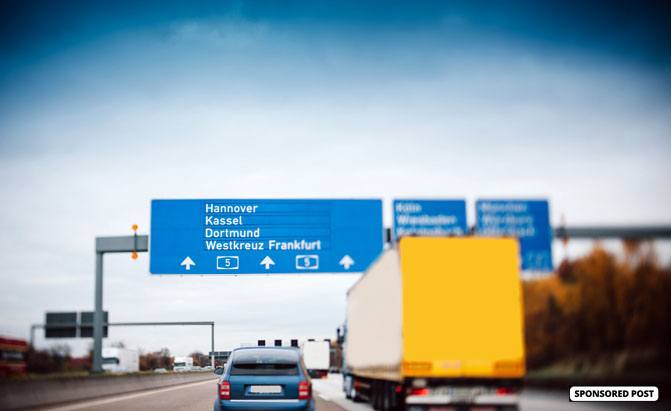Planning a European Road Trip? Here's Everything You Need to Know
There’s nothing more American than a good old-fashioned road trip. And right now, more Americans than ever before are choosing to take that road trip abroad – by ordering an International Driving Permit and exploring the world via highway.
In fact, just last year alone, an incredible 21 million new passports were issued to would-be world travelers, and the most popular travel destination by far was Europe – a continent that’s ideally suited for road trips.
With 50 different countries all packed into a space roughly the same size as the US, there’s no better place to experience a wide range of cultures, traditions, cuisines and even climates than in Europe. And there is no better way to do it than from behind the wheel of a car. Forget everything you learned from National Lampoon’s: driving in Europe is nothing to be worried about, and a European road trip should be on everyone’s travel bucket list.
Here’s what you need to know in order to make your European vacation a trip to remember.
Licensing and permits
Before you start thinking about anything else – like where you want to go, or how many cities you’re going to visit – first you’re going to want to make sure you have the proper paperwork in place. If you hold a US driver’s license, you will need to apply for an International Driving Permit in order to drive in many European countries, according to Jack S., an IDP expert from the International Driver’s Association.
The good news is, this can be done online ahead of time, and is neither complicated nor expensive to obtain. The Permit is an officially recognized document that translates all the information from your US license into 12 commonly-used languages. You will need one in order to rent a car in Europe and should always keep it with you when driving, along with your US driver’s license, in case you’re stopped by traffic officers while abroad.
Aside from your license and IDP, the only other things a car rental company will need to see are your passport and, of course, a recognized credit card for payment. Car rental works in much the same way in Europe as it does in the US, in that basic insurance is provided standard. For added peace of mind however, you may want to invest in additional coverage – but before paying a fortune for comprehensive coverage at the rental counter, it’s worth checking with your own insurance company back home; they may be able to provide higher coverage at a lower price.
European cars
There are three major things that separate a European rental car from their US counterparts:
- They are generally smaller than cars in the US
- Most have manual transmissions
- Most have diesel engines
In general, the cost of fuel and the smaller, tighter European roads will be all the convincing you need to downsize from your usual SUV or full-size, but whatever car you rent, make sure it’s not any bigger than you absolutely need. As for the transmission… if you’re really not comfortable with a stick shift, most major rental car companies will usually have a few automatics available – although these generally come with higher per day rental fees.
Rules of the road
When driving in mainland Europe, you won’t notice any significant difference when crossing borders within the EU. For example, whether you’re crossing from The Netherlands into Germany or from France into Belgium, the only way you’ll even know you’re in a different country is by reading the roadside signs. In most respects, it’s just like crossing from one state into another back home.
However, don’t be fooled by the ease of cross-border travel: each EU country has its own specific laws, and its own way of dealing with offenders. So it’s important that you read up carefully on the various driving laws for each country before your trip so you know what to expect.
Here are a few country-specific tips that often take unprepared travelers by surprise:
- If you plan on driving in Spain, expect plenty of light-flashing and horn honking. But don’t get the wrong idea: this isn’t aggressive driving. It’s actually a legal requirement in Spain when passing another vehicle to warn drivers you are coming through.
- Police in The Netherlands are particularly strict about enforcing speed limit, and fines are calculated according to each km/h over the speed limit. In extreme cases, the police can even seize your license and impound your vehicle. Plan to take it slow, just to be safe.
- Just like in the US, children need to be in the proper seat restraints, depending on their age. In Spain, kids under 12-years-old are not allowed to sit in the front seat, and European police officers will stop you if they spot unrestrained children in your car. They also won’t allow you to keep driving without the correct seat restraints, which can lead to a potentially tricky situation.
- Impaired driving limits are lower in Europe – and are strictly enforced. Offenders face significant fines along with a potential jail sentence. Even a single glass of wine or beer can be enough to put you over the legal limit, so it’s safest to just avoid alcohol entirely if you plan on driving later.
A word about the Autobahn
The German Autobahn is the stuff of legends, and yes, it’s true – large sections of the country’s famed highway system have no speed limit. But before you make a beeline for the German border in your rented BMW, keep the following points in mind:
No speed limit does not mean carte blanche to drive dangerously. You’re still expected to drive according to the conditions, and police will not hesitate to deal with dangerous drivers appropriately.
Watch the road. That might sound obvious, but if you’re driving faster than you’re normally accustomed to, you need to adopt a different mindset. That means thinking, and looking, a mile down the road. When approaching slower vehicles or on-ramps, be sure to slow down just in case someone suddenly changes into your lane.
Stay to the right and watch your mirrors. Or, in other words, don’t be that “someone” we just mentioned above… In many cases, the autobahns have only two lanes in each direction, so stay right except to pass. The left lane is no place to be caught daydreaming about your next meal when someone’s coming up behind you – fast.
Drive within your car’s limits – and your own. At 180 km/h, there are no second chances. So don’t try to push yourself to the limit, or past it. Ultimately, the Autobahn is no different than any other road: as the driver, you know whether the speed you’re driving at feels comfortable and safe. If it doesn’t, slow down.
The German Autobahn can be an important, and enjoyable, part of any European road trip, and are a great way of quickly getting from one point to another – allowing you to cover even more ground on your vacation. So make good use of them and remember to drive safely.
More by AutoGuide.com Staff

































Comments
Join the conversation